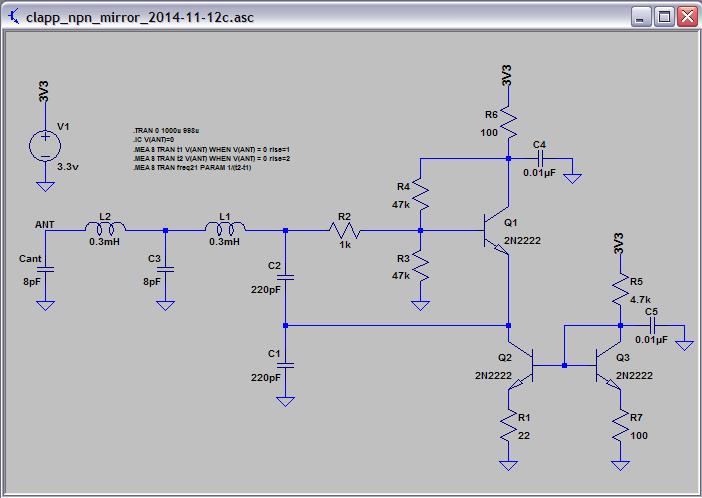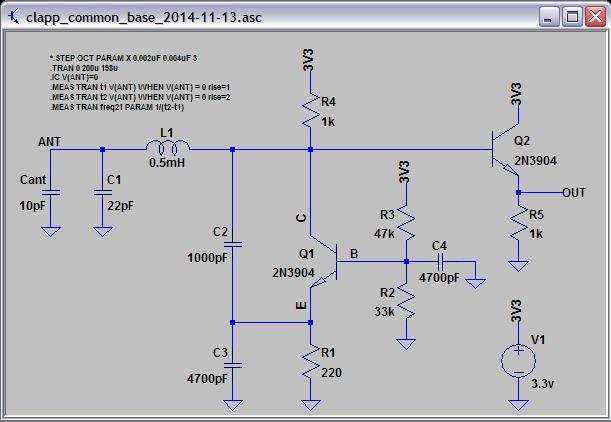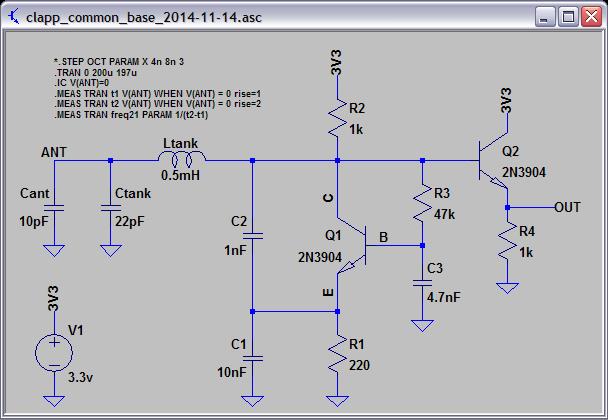Here is a somewhat better oscillator candidate:
It's a Clapp, with the Q1 emitter sourced from a current mirror. This unloads Q1 and makes the impedance seen by the tank at the base of Q1 somewhat higher impedance, allowing higher voltage swings. The bench circuit behaves somewhat differently than the sim, with voltage swing safely within VCC/GND at the Q1 base. Unless you grab the antenna, at which point the voltage increases to a bit higher than the supply rails (given my breadboard setup anyway).
I believe I've seen a large improvement using counter-wound air coils for L1 | L2 (i.e. reception / reduction of magnetic field interference). The center tapped capacitor C3 helps oscillation but probably doesn't improve SNR.
(I've been trying to find a BJT based oscillator that works as good as a FET based one, the above is as close as I've been able to come so far, but the FET is still somewhat better from an interference / phase noise standpoint. FET Clapp + NPN emitter follower is simply amazing. The above is about as stable as the FET, and would likely be fine for use in this thread.)
LTSpice: http://www.mediafire.com/download/14oj5eccobeywb4/clapp_npn_mirror_2014-11-12c.asc



